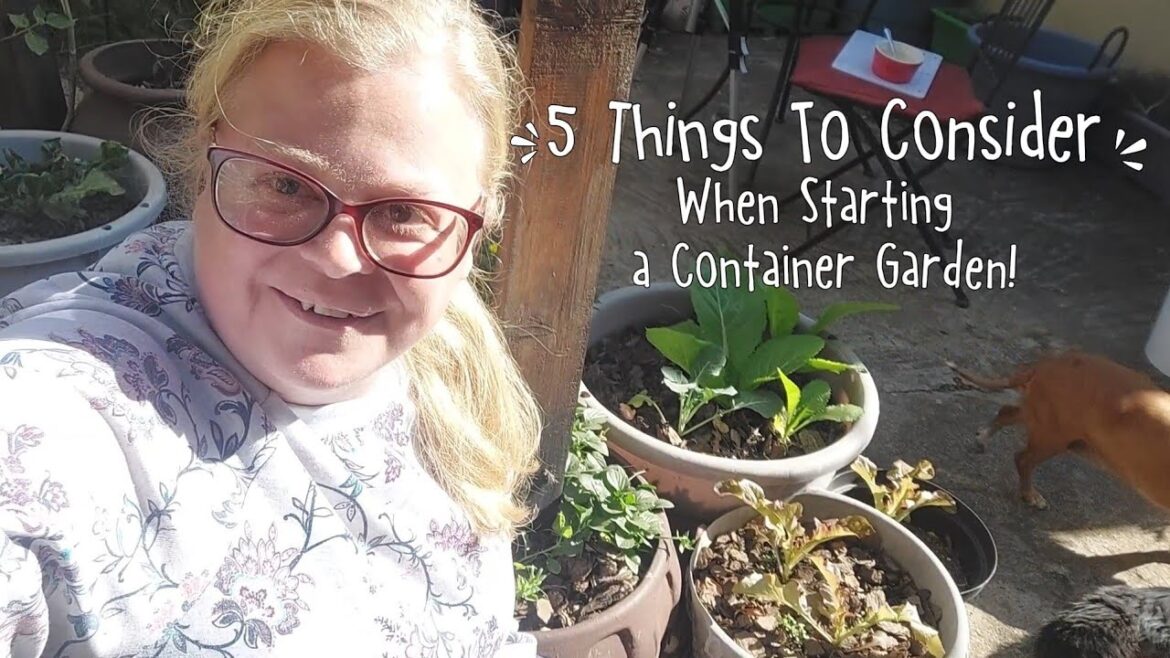Get ready to start your container garden on the right foot! In this video, we’re sharing the must-have essentials to ensure your plants thrive in their new homes. From choosing the perfect containers to selecting the right soil and fertilizers, we’ve got you covered. Whether you’re a beginner or a seasoned gardener, these container gardening tips and tricks will help you create a beautiful and productive garden in no time. So, grab your gloves and let’s get started!
Join me as I share my journey in container gardening, urban homesteading, and DIY projects to become more self-reliant.
📌 Want more? Subscribe & hit the bell 🔔 → https://www.youtube.com/@NextChapterHomestead?sub_confirmation=1
🏡 Follow my journey:
– Instagram: https://www.instagram.com/next_chapter_homestead?igsh=MWN6ajZheDVwd3h4cQ==
– Facebook: https://www.facebook.com/share/16CHpn7NSy/
#ContainerGardening #UrbanHomesteading #SelfReliance #DIY
How magical is that? Starting a container garden can feel like magic. It lets you grow food almost anywhere in a courtyard, a patio, even a paved backyard like mine. But there are a few things I wish I had known earlier. Here are the five things to keep in mind when you’re growing in containers. [Music] Let’s start with the obvious, the container. Bigger is almost always better. Deeper pots hold more soil, which means they stay moist for longer and they give the roots more room to grow. The first step is to make sure that your pot that you do choose to use, irrespective of what it’s made from, has good drainage and that generally comes in the form of holes at the bottom and these are a necessity. It’s also good to keep in mind what your pots are made from, whether they be ter. These ones rusted pretty badly and they’re not exactly the best choice as far as containers go, but be mindful of what you’re growing in, how it deteriorates, and how it best suits you. Next is your soil. Container plants can’t dig into the ground. So, whatever nutrients you give them in that pot is what they have access to. And that’s worth keeping in mind. Now, this pot itself is an old, I think, concrete pore pot, and it’s just been painted. It’s something that I inherited. It does have a drainage hole in the bottom, but it’s not actually effective at draining. So, I tend to use this for things that are slightly more thirsty or could benefit from a lightly moist soil. This soil has both cocoa core and vermiculite, which means it retains its water, but it does drain quite well. So, for the most part, this is probably the best example I have of container soil. You want well draining soil that is airy and soft enough or light enough for your plant’s roots to develop and stretch out. Containers dry out much faster than garden beds. So, even though you have to water them daily, it does become part of the daily rhythm. I like to water early in the morning so that the plants can drink before the heat sets in. You can then maybe look at a secondary um barrier in your actual containers or at least tulle and that for me is mulch. So, it holds water really, really well. And we’ve got it in our containers in a fairly thick layer just to ensure that that moisture within the actual container doesn’t evaporate and the plants still have access to the water that they very much need in order to grow. It is also a very good thing to be mindful of your plants sunlight requirements. Things like lettuce and green leafy veg, they don’t really mind the shade all that much. But some of your other fruing plants like tomatoes and chilies, they tend to need a little bit more sunlight at least 6 to 8 hours a day. As you can see here, some of these containers have got a little bit of sun, so I’m trying to grow things that can handle the shade a little bit better or the dappled sunlight. things like this scarlet kale. This kale is actually, if you follow its stem, growing in this container over here. [Music] [Music] And finally, food. Plants and containers can’t stretch their roots to find nutrients. Everything they’ve got, we have to provide. I like to use a slow release um fertilizer when I pot things up and then supplement it with homemade feeds like this eggshell fertilizer as well as some homemade worm tea. 5 liter watering can. [Music] Two tablespoons of our egg fertilizer. A liter of worm tea. [Applause] I’m just going to top that with the rain water. Remember just to watch your containers, check your plants. If they are looking a little tired and pale, they are probably hungry. Remember, the pots do drain through the base. So, a lot of the nutrients is lost through the watering process, which is why some gardeners actually have trays underneath their pots to mitigate this slightly. Hey guys, so thanks for hanging out with me today as I discussed five things to consider when you’re growing in containers. I really did enjoy myself. I hope you enjoyed yourself, too. And don’t forget to like and subscribe and follow us on our journey into homesteading.


2 Comments
All very sensible advice. I tend to put saucers under my pots in summer and take them away in winter so the roots don't rot.
I see you are planting cats as well.
By the looks of it just one per pot, yes?
We have twelve cats if we want to grow more what advise can you offer regarding compost and mulch etc?
😂